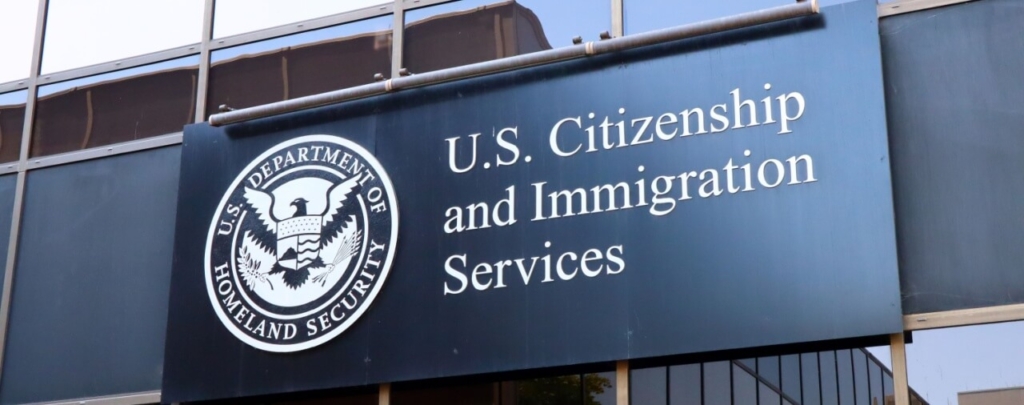Introduction
One of the most significant sticking points in the debate over immigration reform — if not the biggest sticking point — is how to manage the significant number of persons who are present in the United States illegally. In 2014, the Department of Homeland Security (DHS) estimated that there were 11 million aliens in the United States without legal authorization.1
Why this is a Difficult Issue
The issue of how to handle those in the United States illegally is complicated not only because of partisan disputes, but also because there are a significant number of competing concerns and interests. I will provide a brief overview of these considerations:
- The significant number of aliens in the United States illegally undermines United States laws. The immigration laws exist to manage the flow of persons seeking to enter our country.
- We have a process for vetting those who wish to enter the United States to ensure that people who pose a danger to U.S. security or to the U.S. community and those whose admission would otherwise be contrary to the national interest are not allowed into the United States. If people are able to enter the United States without inspection or to remain in the United States without authorization after having gained lawful entry, then it follows that the immigration laws are not protecting the United States from potential harm.
- The immigration laws also have provisions to protect the United States job market. While there is intense disagreement in the political arena regarding the net good and harm done by alien workers, the laws provide for the admission of certain alien workers and proscribe penalties for both employers who employ aliens who lack employment authorization and for aliens who work without authorization. Whether the laws are successful, their goal is to strike a balance such that the United States benefits from nonimmigrant and immigrant labor and skills while not allowing such workers to negatively affect the job market for U.S. citizens (and permanent residents). Unauthorized employment undermines the entire statutory scheme regarding alien employment.
- The ability of aliens to live and work in the United States without authorization encourages further violations of U.S. immigration law. To be sure, if people who are looking for a better life believe (1) that it is easy to live and work in the United States without going through the proper procedures, and (2) that it is to their benefit to do this rather than to try to gain admission through legal means, then it follows that the lack of immigration enforcement creates a perverse incentive to continue to violate the immigration laws.
- There are logistical and humanitarian concerns over removing everyone who is here illegally.
- While the presence of 11 million-plus persons in the United States illegally is a serious problem, it is not practical to remove them all. This would require vast financial expenditure in the form of federal agents and immigration adjudicators that is simply not practical.
- Most people who are in the United States illegally are not dangers to U.S. security or to their communities. In fact, many of these people abide by all of the laws other than the immigration laws and work hard to provide for themselves and their families. Furthermore, many people here illegally have established deep roots in their communities, and some were even brought to the United States as children and have a distinctly American identity.
- The violations of the immigration laws are sometimes encouraged by the immigration laws themselves. For example, as I discussed in a blog, the lack of a nonimmigrant visa category for dairy farmers is a ridiculous situation that harms U.S. employers, the U.S. dairy market, and many people of good will who are willing to do a difficult job that U.S. citizens are not inclined to do [see blog]. Furthermore, the long wait times for visa processing may also create a disincentive for following the immigration laws. In certain cases, immigration penalties such as the 3- and 10-year unlawful presence bars of inadmissibility [see article], while perhaps justified, incentivize people to remain in the United States without authorization.
Different Ways of Handling the Issue
The complexity of these issues concerning those who are in the United States illegally leads to diverse proposals offering conflicting solutions. Some, such as Hillary Clinton, propose allowing those who are deemed to not be high deportation priorities to immediately be put on a path to citizenship as part of a comprehensive immigration reform deal. This idea, colloquially called “amnesty,” would allow many, if not most, of the aliens in the United States illegally to apply for and be granted some sort of status that would eventually lead to a path to citizenship. However, even among those who agree in general with this concept there are disagreements with regard to how stringent the requirements for legalization and eventual citizenship should be. Clinton’s public statements suggest that she supports a very lenient path, while the ill-fated “Gang of Eight” proposal would have entailed a long path to citizenship for certain persons here illegally. In the Republican primaries, Senator Marco Rubio proposed a path to legalization that would require even qualified aliens to spend at least a decade in a special nonimmigrant status before even applying for LPR status.2
Others oppose any path to citizenship at all. This position was staked out by Senator Ted Cruz in the Republican Presidential primary. Under this proposal, people who are in the United States illegally would remain subject to deportation so long as they remained. Their only recourse for obtaining legal status would be within the framework of the existing immigration laws (which, in many cases, would mean departing and then applying for lawful status while abroad).
Finally, some have voiced support for what is sometimes called “touchback amnesty.” Both Donald Trump and Mike Pence have proposed variations of this concept in the past. In short, touchback amnesty would require those who are here illegally to depart the United States and apply for some sort of legal status while abroad. The carrot for departure would be the promise of later legalization. Other variations of the approach involve an increased emphasis on deportation, especially for those who do not depart voluntarily. However, Trump has at times seemed to propose allowing even people who are deported to seek legal status expeditiously from abroad.
The Goal of Any Proposal and the Lesson of the IRCA 1986
In deciding between the various approaches, one must first ascertain what the desired result is. In my assessment, any proposal must:
1. Resolve the issue of eleven million people here without authorization; and
2. Ensure we are not facing the same situation thirty years from now.
I did not just pick “thirty years” out of a hat. It was thirty years ago that President Ronald Reagan signed the Immigration Reform and Control Act of 1986 (IRCA of 1986). The Act combined immigration enforcement measures with a substantial legalization program for certain persons who had entered the United States before 1982 and remained continuously. In signing the legislation, President Reagan surely hoped that the combination of new enforcement measures and the resolution of the status of those who were then present illegally would help solve the problems in our immigration system. However, as evinced by the existence of the blog post you are reading, the IRCA of 1986 did not live up to its promise. We can glean two main lessons from the failure of the 1986 Law to curb illegal immigration:
1. The legalization provision itself functioned as a perverse incentive for future illegal immigration in that it created an expectation that people here illegally would eventually be legalized; and
2. The potential effectiveness of the enforcement provisions, enacted at the same time as the legalization program, could not be known before they were actually put into effect.
In short, “comprehensive immigration reform” efforts that mix enforcement and legalization (with or without citizenship) for those who are here illegally have a fundamental problem: While the outcome of legalization of current aliens is predictable, the future effectiveness of even the most well-conceived immigration enforcement policy can only be the subject of speculation, which is further complicated by the fact that legalization will encourage an additional influx of illegal immigration.
Dubious Proposals (Including those of the Two Major Candidates)
It is clear from the goals I set for dealing with those who are here illegally and my brief study of our past experience that Hillary Clinton’s simplistic proposal is inadequate. Similar to the IRCA of 1986 framework, Clinton asks us to trade definite legalization and a path to citizenship for changes to the immigration laws that will have uncertain effectiveness in curbing future violations. Furthermore, the laxity of the requirements she seems to suggest for legalization will create a strong incentive for future violations of the immigration laws.
However, touchback amnesty is also not the solution. I have explained on my blog that Donald Trump’s occasional proposals for mass deportations are simply not realistic. As much truth as there may be to the joke that immigration enforcement seems to be the only thing that Democrats consider too expensive, it is undoubtedly true that the potential resources and expense involved in deporting 11 million or more people who are here illegally is not a realistic consideration. Furthermore, such an approach would be inhumane, depriving those who are here illegally of the protections of our immigration laws and indiscriminately tearing families apart.
Of course, simply doing nothing and wishing the problem away has also proven to not be a solution either. If nothing continues to be done, we will continue to have an extremely high number of persons present in the United States in violation of the immigration laws who potentially pose the threats that those laws are designed to safeguard against. Their presence will serve as an incentive to others who want entry into the United States, and as an insult to those who often wait years for the opportunity to enter lawfully. Like Clinton’s proposals, these approaches ultimately fail in achieving either of the objectives that we should work toward in coming up with a solution.
Touchback amnesty is an impressive transmogrification of the two aforementioned methods into something that is arguably even worse. On one hand, it is easy to see the appeal of touchback amnesty. One may think that compelling illegal aliens to leave the United States with a promise of a path to a legal return provides the requisite incentive for them to depart. However, it is not so simple. In reality, many people who are living “in the shadows,” so to speak, will determine that their best option is to remain as they are in the United States. This is because there would likely be no guarantee that they would be found eligible for status upon applying from their home countries. Moreover, if there were to be a guarantee, then “touchback amnesty” could be said to be even more lenient than Clinton’s preferred position (see my discussion of a 2007 proposal by Mike Pence [see blog]).
Finally, the worst position has been suggested at times by Donald Trump, who has proposed to encourage so-called mass deportations before allowing the majority of the people deported to subsequently obtain lawful admission [see blog]. That idea combines all of the problems from the previous two approaches into an approach that is inarguably more inane and illogical than either. Fortunately, Trump has seemed to somewhat back off the first prong of this proposal, although it is unclear where he stands on the second [see blog].
The Best Path Forward
Before addressing the status of those who are here illegally, Congress should pass and the President should sign a law detailing new immigration enforcement measures. It is important that law address both those who enter without inspection and those who enter legally but then overstay or otherwise fall out of status and remain. The status of those who are currently here illegally should not be addressed until we see that certain clearly defined and impartially measured benchmarks have been met through the implementation of new enforcement measures. Handling the issue in this manner reverses the paradigm from previous unsuccessful combined efforts, because the determination of how best to address those who are here illegally would be contingent on the enforcement provisions first yielding actual results. This would incentivize all sides looking for a solution to come up with potentially effective ways to curb illegal immigration and to do what is necessary to ensure the success of the new laws and initiatives.
One issue with my method is that those who seek immediate legalization would likely be skeptical that amnesty would be agreed to down the line. However, I think that both sides can come to an agreement by including strong pro-immigration reforms with the new enforcement measures. To return to the dairy farmer example, a program to make it possible for dairy workers to enter the United States legally as nonimmigrants would benefit the U.S. dairy industry and allow our immigration enforcement agents to focus on more productive issues. Furthermore, we must reorient the focus of our immigration system toward attracting people with a broader range of practical yet valuable skills who may benefit the United States. This means creating an effective merit-based points system for applicants, increasing the number of available visas, and making it easier for highly skilled nonimmigrant and immigrant workers to apply their valuable skills in the United States. General proposals such as these do not only benefit the United States by bringing in aliens with valuable skills, but it also strengthens our legal immigration system as a whole.
Once we meet immigration enforcement benchmarks and enact reforms to make our immigration system more amenable to aliens with valuable skills, I would support a legalization program for many people who are here illegally but who do not otherwise have a criminal record, who pay back taxes, and who meet certain residency requirements in the United States. While it is never ideal to reward future illegality, such a proposal would encourage those who are here illegally and who have been otherwise upstanding members of U.S. society to come forward and obtain legal status with the promise of a long path to permanent residency and citizenship (to be clear, seeking permanent residency through legal channels must come first). This legalization program would allow immigration enforcement to focus its resources on those who actually do pose a threat and those who enter illegally or overstay after enactment of the new legalization. Such an approach would be compassionate, pro-immigration, and mitigate the risk that we have the same problems in the future.
Consider this a brief overview of some of my positions on immigration reform. I look forward to providing much more details on specific proposals in future immigration blogs. To see other entries in my series of posts about immigration issues and the election, please see my introductory entry [see blog].





